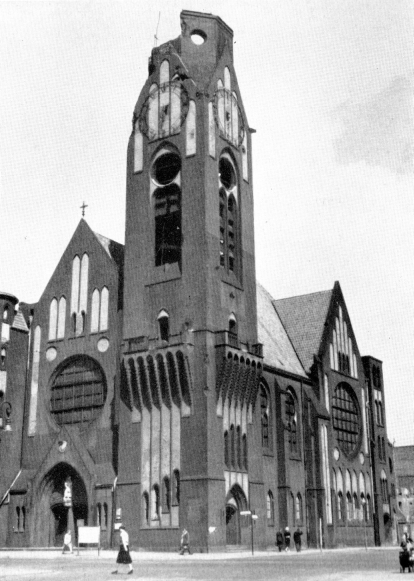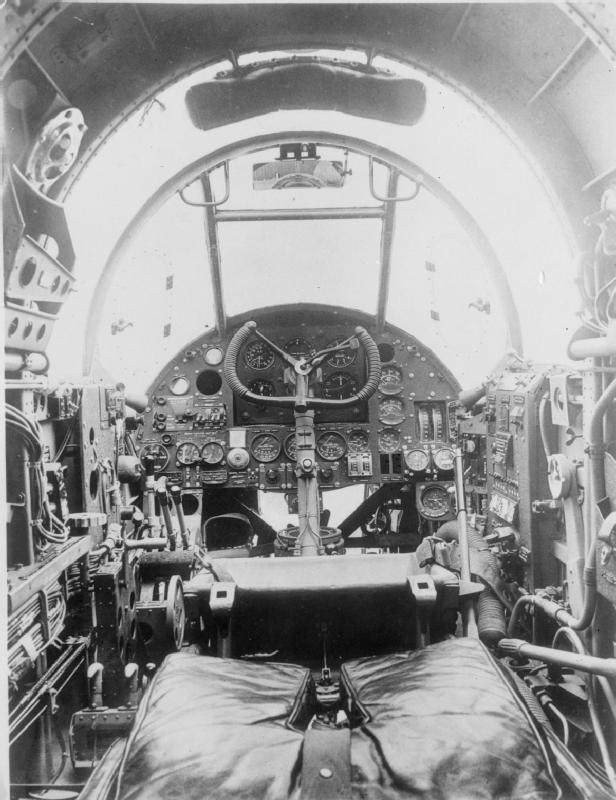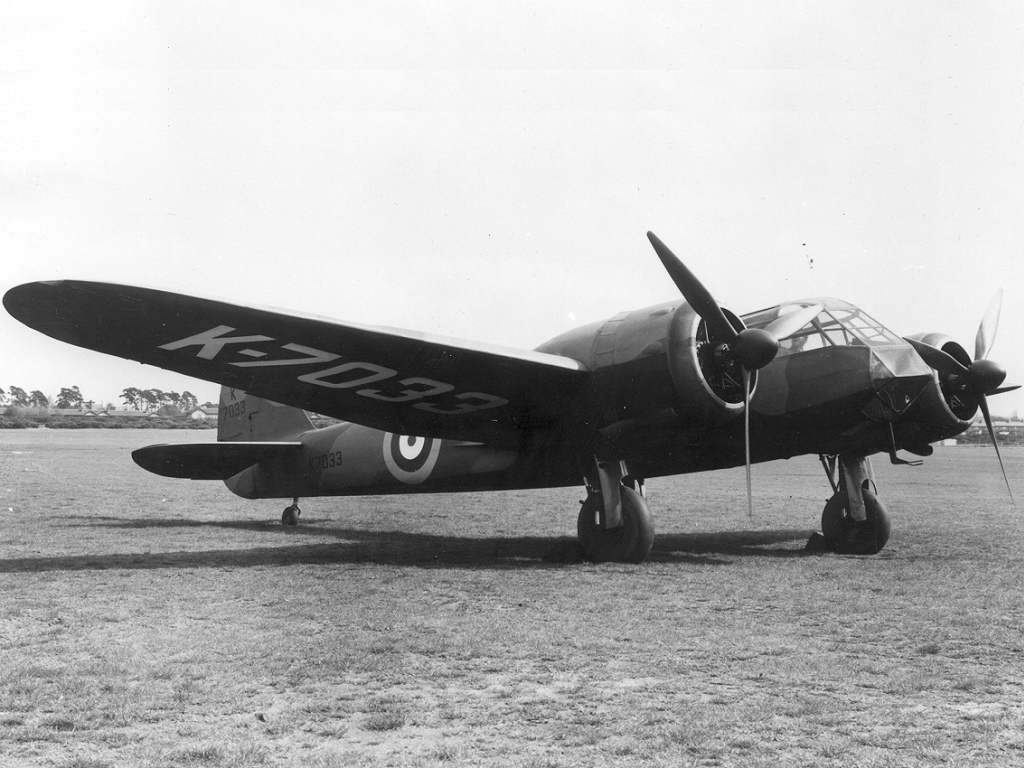|
Battle Of Berlin (RAF Campaign)
The Battle of Berlin (November 1943 to March 1944) was a bombing campaign against Berlin by RAF Bomber Command, along with raids on other German cities to keep German defences dispersed. The attacks were a part of the Bombing of Berlin in World War II, bombing of Berlin during the strategic bombing during World War II, strategic bombing of Germany in the Second World War. Air Chief Marshal Arthur Harris, Air Officer Commanding-in-Chief (AOC-in-C) Bomber Command, believed that "we can wreck Berlin from end to end if the USAAF come in with us. It will cost us between 400 and 500 aircraft. It will cost Germany the war". Harris could expect about 800 serviceable heavy bombers for each raid, equipped with new and sophisticated navigation devices such as H2S radar. The United States Army Air Forces (USAAF), having recently lost many aircraft in attacks on Schweinfurt#World War II, Schweinfurt, did not participate. The Main Force of Bomber Command attacked Berlin sixteen times but fail ... [...More Info...] [...Related Items...] OR: [Wikipedia] [Google] [Baidu] |
Bombing Of Berlin In World War II
Berlin, the capital of Germany, was subject to 363 air raids during the Second World War. It was bombed by the RAF Bomber Command between 1940 and 1945, the United States Army Air Forces' Eighth Air Force between 1943 and 1945, and the French Air Force in 1940 and between 1944 and 1945 as part of the Allied campaign of strategic bombing of Germany. It was also attacked by aircraft of the Red Air Force in 1941 and particularly in 1945, as Soviet forces closed on the city. British bombers dropped 45,517 of bombs, while American aircraft dropped 22,090.3 . As the bombings continued, more and more people fled the city. By May 1945, 1.7million people (40% of the population) had fled. Prelude When the Second World War began in 1939, US President Franklin D. Roosevelt issued a request to the major belligerents to confine their air raids to military targets. The French and the British agreed to abide by the request "upon the understanding that these same rules of warfare will be sc ... [...More Info...] [...Related Items...] OR: [Wikipedia] [Google] [Baidu] |
Unternehmen Steinbock
Operation Steinbock or Operation Capricorn (), sometimes called the Baby Blitz or Little Blitz, was a strategic bombing campaign by the German Air Force (the Luftwaffe) during the Second World War. It targeted southern England and lasted from January to May 1944. Steinbock was the last strategic air offensive by the German bomber arm during the conflict. In late 1943, the Allied Combined Bomber Offensive was gathering momentum against Germany. The Allied air forces were conducting a strategic bombing campaign day and night against German industrial cities. In retaliation, Adolf Hitler ordered the Luftwaffe to prepare a bombing operation against the United Kingdom. The bombing offensive also served as propaganda value for the German public and domestic consumption. The operation ran parallel to Bomber Command's campaign against Berlin (November 1943 – March 1944). The Luftwaffe assembled 474 bomber aircraft for the offensive. The attacks were mainly aimed at and around the Gre ... [...More Info...] [...Related Items...] OR: [Wikipedia] [Google] [Baidu] |
Short Stirling
The Short Stirling was a British four-engined heavy bomber of the Second World War. It has the distinction of being the first four-engined bomber to be introduced into service with the Royal Air Force (RAF) during the war (the earlier Handley Page V/1500 being a WWI design that served during the 1920s). The Stirling was designed during the late 1930s by Short Brothers to conform with the requirements laid out in Air Ministry Specification B.12/36. Prior to this, the RAF had been primarily interested in developing increasingly capable twin-engined bombers, but had been persuaded to investigate a prospective four-engined bomber as a result of promising foreign developments in the field. Out of the submissions made to the specification, Supermarine proposed the Type 317, which was viewed as the favourite, whereas Short's submission, named the S.29, was selected as an alternative. When the preferred Type 317 had to be abandoned, the S.29, which later received the name Stirling, ... [...More Info...] [...Related Items...] OR: [Wikipedia] [Google] [Baidu] |
Handley Page Hampden
The Handley Page HP.52 Hampden is a British twin-engine medium bomber that was operated by the Royal Air Force (RAF). It was part of the trio of large twin-engine bombers procured for the RAF, joining the Armstrong Whitworth Whitley and Vickers Wellington. The Hampden was powered by Bristol Pegasus radial engines but a variant known as the Handley Page Hereford had inline engine (aeronautics), in-line Napier Daggers. The Hampden served in the early stages of the Second World War, bearing the brunt of the early bombing war over Europe, taking part in the Bombing of Berlin in World War II, first night raid on Berlin and the Bombing of Cologne in World War II#First 1,000 bomber raid, first 1,000-bomber raid on Cologne. When it became obsolete, after a period of mainly operating at night, it was retired from RAF Bomber Command service in late 1942. By 1943, the rest of the trio were being superseded by the larger four-engined Heavy bomber#World War II 2, heavy bombers such as the Av ... [...More Info...] [...Related Items...] OR: [Wikipedia] [Google] [Baidu] |
Armstrong Whitworth Whitley
The Armstrong Whitworth A.W.38 Whitley was a British medium/heavy bomber aircraft of the 1930s. It was one of three twin-engined, front line medium bomber types that were in service with the Royal Air Force (RAF) at the outbreak of the World War II, Second World War. Alongside the Vickers Wellington and the Handley Page Hampden, the Whitley was developed during the mid-1930s according to Air Ministry List Of Air Ministry Specifications, Specification B.3/34, which it was subsequently selected to meet. In 1937, the Whitley formally entered into RAF squadron service; it was the first of the three medium bombers to be introduced. Following the outbreak of war in September 1939, the Whitley participated in the first RAF bombing raid upon German territory and remained an integral part of the early British bomber offensive. In 1942 it was superseded as a bomber by the larger four-engined "Heavy bomber#World War II 2, heavies" such as the Avro Lancaster. Its front-line service include ... [...More Info...] [...Related Items...] OR: [Wikipedia] [Google] [Baidu] |
Bristol Blenheim
The Bristol Blenheim is a British light bomber designed and built by the Bristol Aeroplane Company, which was used extensively in the first two years of the Second World War, with examples still being used as trainers until the end of the war. Development began with the ''Type 142'', a civil airliner, after a challenge from the newspaper proprietor Harold Harmsworth, 1st Viscount Rothermere, Lord Rothermere to produce the fastest commercial aircraft in Europe. The ''Type 142'' first flew in April 1935, and the Air Ministry, ordered a modified design as the ''Type 142M'' for the Royal Air Force (RAF) as a bomber. Deliveries of the new Blenheim to RAF squadrons commenced on 10 March 1937. In service the Type 142M became the Blenheim Mk.I which would be developed into the long-nosed Type 149, the Blenheim Mk.IV, except in Canada where Fairchild Canada built the Type 149 under licence as the Bolingbroke. The Type 160 Bisley was also developed from the Blenheim but was already obsol ... [...More Info...] [...Related Items...] OR: [Wikipedia] [Google] [Baidu] |
Target Indicator
Target indicators, also known as target markers or TI's for short, were flares used by the RAF's Bomber Command during World War II. TIs were normally dropped by Pathfinders onto the target, providing an easily seen visual aiming point for the following "main force" of bombers to aim at. After their introduction, the use of TIs expanded to include en-route markers to gather up lost aircraft, additional TI drops to keep the target lit over long periods, and various changes in technique to address German defences. The use of TIs allowed the RAF to concentrate its advanced navigational systems in the Pathfinder units. Most widely used were the H2S ground scanning radar and Oboe navigation system, the former requiring considerable training to be useful, the latter able to guide only a single aircraft at a time. The limited number of navigational units meant that spreading them through the force would have limited effects. By concentrating these in a single Group ( No. 8 Group RAF) ... [...More Info...] [...Related Items...] OR: [Wikipedia] [Google] [Baidu] |
Pathfinder Force
The Pathfinders were target-marking squadrons in RAF Bomber Command during World War II. They located and marked targets with flares, at which a main bomber force could aim, increasing the accuracy of their bombing. The Pathfinders were normally the first to receive new blind-bombing aids such as Gee, Oboe and the H2S radar. The early Pathfinder Force (PFF) squadrons were expanded to become a group, No. 8 (Pathfinder Force) Group, in January 1943. The initial Pathfinder Force was five squadrons, whilst No 8 Group ultimately grew to a strength of 19 squadrons. Whereas the majority of Pathfinder squadrons and personnel were from the Royal Air Force, the group also included No 405 Squadron of the Royal Canadian Air Force as well as many individual airmen from the air forces of other Commonwealth countries. History Background At the start of the Second World War in September 1939 the doctrine of RAF Bomber Command was based on tight formations of heavily armed bombers attack ... [...More Info...] [...Related Items...] OR: [Wikipedia] [Google] [Baidu] |
Radio Jamming
Radio jamming is the deliberate blocking of or interference with wireless communications.https://apps.fcc.gov/edocs_public/attachmatch/DA-12-347A1.pdf Enforcement Advisory No. 2012-02 FCC Enforcement Advisory Cell Jammers, GPS Jammers, and Other Jamming Devices Consumer Alert: Using or Importing Jammers is Illegal In some cases, jammers work by the transmission of radio signals that disrupt telecommunications by decreasing the signal-to-noise ratio. The concept can be used in wireless data networks to disrupt information flow. It is a common form of censorship in totalitarian countries, in order to prevent foreign radio stations in border areas from reaching the country. Jamming is usually distinguished from interference that can occur due to device malfunctions or other accidental circumstances. Devices that simply cause interference are regulated differently. Unintentional "jamming" occurs when an operator transmits on a busy frequency without first checking whether it is in ... [...More Info...] [...Related Items...] OR: [Wikipedia] [Google] [Baidu] |
Gee (navigation)
Gee, sometimes written GEE, was a radio-navigation system used by the Royal Air Force during World War II. It measured the time delay between two radio signals to produce a Fix (position), fix, with accuracy on the order of a few hundred metres at ranges up to about . It was the first hyperbolic navigation system to be used operationally, entering service with RAF Bomber Command in 1942. Gee was devised by Robert Dippy as a short-range Instrument approach, blind-landing system to improve safety during night operations. In the course of development by the Telecommunications Research Establishment (TRE) at Swanage, the range was found to be far better than expected. It then developed into a long-range, general navigation system. For large, fixed targets, such as cities that were attacked at night, Gee offered enough accuracy to be used as an aiming reference without the need to use a bombsight or other external references. Radar jamming and deception, Jamming reduced its usefulne ... [...More Info...] [...Related Items...] OR: [Wikipedia] [Google] [Baidu] |
List Of Royal Air Force Operational Training Units
Royal Air Force Operational Training Units (OTUs) were training units that prepared aircrew for operations on a particular type or types of aircraft or roles. OTUs ;No. 1 (Coastal) Operational Training Unit RAF (1 (C)OTU): The Unit was formed in 1940 as part of RAF Coastal Command at RAF Silloth for training aircrew on coastal command patrol aircraft types until it was disbanded on 19 October 1943.Sturtivant 2007, pp. 198-206 ; No. 2 (Coastal) Operational Training Unit RAF (2 (C)OTU): 2 OTU was formed in 1940 as part of Coastal Command at RAF Catfoss for training aircrew on coastal command twin-engined fighter and strike aircraft types until it was disbanded 15 February 1944. ; No. 3 (Coastal) Operational Training Unit RAF (3 (C)OTU): 3 OTU was formed in 1940 as part of Coastal Command at RAF Catfoss for training aircrew on coastal command aircraft types including the Avro Anson and Bristol Beaufighter, until it was disbanded 4 January 1944. ; No. 4 (Coastal) Operational Tra ... [...More Info...] [...Related Items...] OR: [Wikipedia] [Google] [Baidu] |
Thousand-bomber Raids
The term "thousand-bomber raid" was used to describe three night bombing raids by the Royal Air Force against German cities in summer 1942 during World War II. The term was a propaganda device, whereby Arthur Harris reached the number of bombers by including not only bombers that were currently operational as part of RAF Bomber Command, but also aircrews from Operational Training Units to accumulate a force of 1,000 bombers as a demonstration of the RAF's power. The bulk of the bomber force was twin-engined medium bombers like the Vickers Wellington. While the number of heavy bombers in the RAF increased, greater tonnage could be dropped on a target with fewer aircraft. Later mass RAF raids used between 400 and 700 four-engined bombers, and on some nights, Bomber Command sent two forces of 400-bomber each to separate targets. Operation Gomorrah in 1943 and the Attack on Dresden in 1945 each used nearly 800 aircraft. Nearly 900 were sent to Berlin in February 1944; with aircraft on ... [...More Info...] [...Related Items...] OR: [Wikipedia] [Google] [Baidu] |







